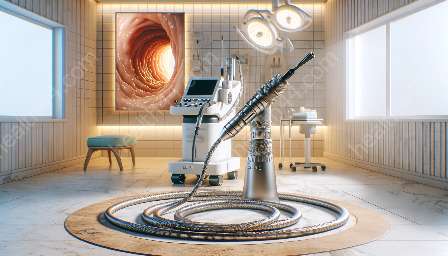The world of medical devices and equipment is vast, with flexible endoscopes playing a crucial role in modern healthcare. In this comprehensive guide, we'll explore the uses, construction, and maintenance of flexible endoscopes, shedding light on their significance in the field of endoscopy.
Understanding Flexible Endoscopes
Flexible endoscopes are sophisticated medical instruments used to visually examine the interior of a patient’s body. Unlike rigid endoscopes, flexible endoscopes feature a flexible insertion tube and are widely utilized in various medical specialties, such as gastroenterology, pulmonology, and urology.
Components of Flexible Endoscopes
The primary components of a flexible endoscope include:
- Insertion Tube: This flexible part of the endoscope allows for easy navigation through the body's natural passages, enabling physicians to view internal organs and tissues.
- Control Section: Houses the control mechanisms for manipulating the insertion tube, including bending, rotation, and image capture.
- Light Source: A powerful illumination system ensures clear visualization of the internal areas being examined.
- Optical System: Consists of lenses and imaging sensors that deliver high-quality, real-time images to the medical professional.
Applications of Flexible Endoscopes
Flexible endoscopes are utilized in a wide range of medical procedures, including:
- Gastrointestinal Endoscopy: Used for diagnosing and treating conditions of the gastrointestinal tract.
- Respiratory Endoscopy: Allows visualization of the airway and lungs, aiding in the diagnosis and treatment of respiratory disorders.
- Urological Endoscopy: Enables visualization of the urinary tract for diagnostic and surgical purposes.
Advantages of Flexible Endoscopes
The flexibility of these endoscopes offers several advantages, including:
- Minimally Invasive: Reduces patient discomfort and promotes faster recovery.
- Enhanced Visualization: Provides clear and detailed images of internal structures, aiding in accurate diagnosis and treatment.
- Increased Access: Can reach areas that would be challenging for rigid endoscopes to access.
Maintenance of Flexible Endoscopes
Proper maintenance is essential to ensure the longevity and performance of flexible endoscopes. This includes meticulous cleaning, disinfection, and regular inspection to identify any wear and tear.
Emerging Technologies in Flexible Endoscopes
The field of flexible endoscopy continues to evolve, with the integration of advanced technologies such as high-definition imaging, robotic assistance, and miniature camera systems. These innovations enhance the precision and capabilities of flexible endoscopes, improving their diagnostic and therapeutic potential.
Conclusion
Flexible endoscopes represent a cornerstone of modern medical devices and equipment, playing a pivotal role in advancing the field of endoscopy. Embracing innovative technologies and stringent maintenance practices ensures that these essential instruments continue to contribute to enhanced patient care and improved outcomes.


